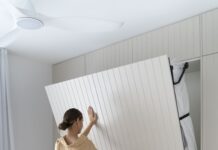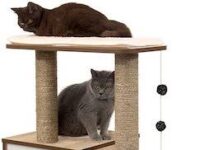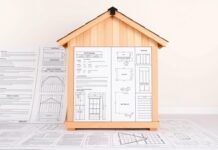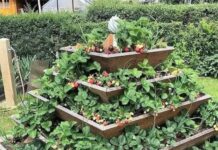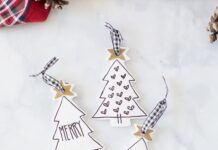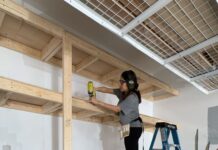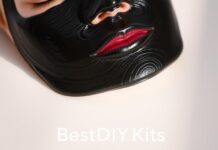Did you know that over 40 million cat owners in the United States spend an average of $50 annually on cat trees? While store-bought options can be pricey, a DIY cat tree offers a fun and cost-effective solution.
Building your own cat tree can save you up to 70% compared to premium models, making it a smart choice for pet owners on a budget.
With a few basic tools like a circular saw and a drill, you can create a custom cat tree that fits your home decor and your cat’s preferences.
Using materials such as plywood and carpet, you can design a structure that’s both durable and comfortable for your feline friend. Plus, the process is rewarding and allows you to add personal touches that make the tree truly unique.
Expert opinions highlight the importance of uniqueness and quality in DIY projects. By following a well-structured plan and using sturdy materials, you can ensure your cat tree is safe and long-lasting.
This guide will walk you through everything you need to know, from selecting the right materials to assembling the final product.
Key Takeaways
- Save up to 70% by building your own DIY cat tree.
- Custom designs allow for personalization to fit your home and cat’s needs.
- Basic tools like a circular saw and drill are essential for the project.
- Plywood and carpet are ideal materials for durability and comfort.
- Expert guidance ensures a safe and sturdy final product.
Introduction to Your DIY Cat Tree Project
Creating a custom cat tree is a rewarding project that combines creativity with practicality. By building your own, you can tailor the design to your cat’s preferences and your home’s decor, ensuring both functionality and style.
Understanding EEAT and Expert Opinions
EEAT stands for Expertise, Authoritativeness, and Trustworthiness. In DIY projects, especially those involving safety and durability, expert insights are invaluable.
According to Family Handyman, a well-structured plan and quality materials are essential for a safe and sturdy cat tree.
Another expert opinion on the subject of cat tree safety comes from Dr. Kelly C. Ballantyne, a board-certified veterinary behaviorist. She emphasizes that cat trees are essential for providing mental and physical stimulation to cats, helping prevent obesity, stress, and anxiety. Dr. Ballantyne highlights the importance of selecting well-designed cat trees made from non-toxic materials and ensuring their stability to avoid accidents
Why a Custom Cat Tree Matters for Your Feline Friend
A custom cat tree offers unique benefits that go beyond aesthetics. It allows you to incorporate features like scratching posts, hiding spots, and elevated platforms tailored to your cat’s behavior and preferences.
This customization not only keeps your cat engaged and active but also provides a sense of security and comfort.
Additionally, building a custom cat tree can be a cost-effective solution, often costing significantly less than store-bought options.
| Feature | Benefit |
|---|---|
| Custom Design | Matches your home decor and cat’s needs |
| Unique Functionality | Incorporates scratching posts and hiding spots |
| Cost-Effective | Saves up to 70% compared to premium models |
By following expert advice and using high-quality materials, you can create a durable and safe cat tree that enhances your cat’s quality of life.
This project is not just about saving money; it’s about providing a personalized space that promotes your cat’s physical and emotional well-being.
Planning Your Project: Tools, Materials, and Space
Before diving into your DIY cat tree project, it’s essential to plan meticulously. Gathering the right tools and materials ensures a smooth process, while considering your space helps in creating a structure that fits perfectly.
Tools and Materials Overview from Trusted Sources
To begin, you’ll need basic tools like a circular saw, drill bits, and a handsaw. These tools are easy to use, even for beginners, and are crucial for cutting and assembling the wood. For materials, opt for high-quality plywood and solid wood for durability. Avoid using MDF if possible, as it’s heavier and less stable.
Budget Considerations and Sourcing Locally
Budgeting is key to keeping costs reasonable. Aim to spend between $200 and $500, depending on the size and features. Sourcing materials locally can save money and reduce delivery times. Consider visiting local hardware stores or using reclaimed wood for a cost-effective solution.
Accurate measurements are vital for safety and precision. Use a measuring tape and level to ensure all cuts are made correctly. Plan your cuts in advance to minimize waste and save time. Remember, precise cuts lead to a sturdy and safe structure.
Organizing your workspace and planning every step ensures a successful project. Take your time to measure twice and cut once, as this prevents errors and ensures a professional finish.
With the right tools, materials, and space planning, you’ll be well-prepared to create a safe and enjoyable cat tree for your feline friend.
Designing a Fun & Sturdy Cat Tree
When designing a fun and sturdy cat tree, it’s all about balancing creativity with practicality. Start by sketching out your ideas to visualize the structure and ensure it meets your cat’s needs. Consider incorporating multiple platforms and levels to keep your pet engaged and active.
Expert tips suggest using dimensional lumber for durability and PVC pipes for unique design elements. These materials not only add stability but also allow for creative flexibility. When selecting the right piece of wood, opt for solid wood over MDF for a sturdier base.
Planning the platform layout is crucial. Ensure each platform is spacious enough for your cat to move comfortably.
The goal is to create a structure that’s both fun and safe. By following these design principles, you’ll craft a cat tree that’s both enjoyable for your pet and durable for years to come.
Constructing a Stable Base and Vertical Supports
A sturdy base is the foundation of a safe and durable structure. Without it, the entire setup could tip over, posing a risk to your pet. Experts recommend using high-quality materials to ensure stability and longevity.
Building a Heavy, Non-Tip Base
Start by cutting two 2×4 lumber pieces to 18 inches each for the base frame. Assemble them into a rectangle using 3-inch screws. Add a 1/2-inch plywood sheet on top, securing it with 1-inch staples spaced every 2 inches. This creates a solid, heavy base that resists tipping.
Preparing Vertical Posts for Durability
Cut four 2×4 posts to 36 inches tall. Attach each post to the base using 3-inch screws, spacing them evenly. Ensure each post is level and secure. For added strength, wrap sisal rope around the posts, stapling every inch to create a durable scratching surface.
Regularly inspect and tighten screws to maintain stability. Using quality materials ensures your structure remains safe and sturdy over time.
Crafting Platforms, Shelves, and Hammocks
Designing the perfect platforms, shelves, and optional hammocks for your cat tree involves careful planning and attention to detail.
Start by measuring and cutting your platforms to the desired size, ensuring they fit seamlessly into your design. Wrap each platform with carpet for a comfortable surface, securing it tightly to hide any fasteners.
Platform Measurements and Carpet Wrapping Tips
Begin by cutting your wood to the exact measurements needed for each platform. Once cut, wrap the surfaces with carpet, ensuring a snug fit.
Use a staple gun to secure the carpet edges, folding them neatly for a polished look. This not only provides comfort but also creates a visually appealing finish.
Step-by-Step Hammock Attachment Techniques
To add a hammock, start by attaching sisal rope to the sides of the platform for support. Use a hot glue gun to secure the rope ends.
Next, stretch the fabric over the rope frame, stapling it firmly in place. For added comfort, incorporate a soft bed area using plush fabric, ensuring it’s securely attached with staples. This creates a cozy spot for your cat to rest.
By following these steps, you’ll create a sturdy and comfortable space for your cat to enjoy. Remember to test each part for stability before letting your cat use it, ensuring a safe and enjoyable experience.
Enhancing Your Creation with Scratching Posts and Rope Wraps
Enhancing your cat tree with scratching posts and decorative rope wraps can significantly improve its functionality and safety.
These additions not only provide your feline friend with more activities but also add a touch of style to the structure.
To integrate scratching posts, start by wrapping sisal rope around them. This natural fiber is durable and appealing to cats, making it ideal for scratching.
Secure the rope tightly along the sides and edges of each post using staples. Ensure there are no loose ends by stapling firmly at each corner and along the edges.
When working with corners, maintain a smooth finish by carefully wrapping the rope around each edge. This prevents the rope from bunching up and ensures a neat appearance.
Proper placement of screws and staples is crucial for durability. Make sure each staple is driven in securely to hold the rope in place without causing damage to the post.
By following these steps, you can create a cat tree that is both functional and visually appealing. The addition of scratching posts and decorative rope wraps will provide your cat with endless entertainment while keeping the structure stable and safe.
Incorporating Safety Features and Expert Design Tips
Safety is paramount when building a structure for your pet, and expert design tips can make all the difference. Ensuring that your project is both secure and free from hazards is crucial for your pet’s well-being.
By following professional methods and using non-toxic materials, you can create a safe environment that lasts.
Proper Fastening Methods and Avoiding Hazardous Exposures
A key aspect of safety is using the right tools and techniques. Drill bits play a crucial role in creating precise pilot holes for screws, preventing wood from splitting.
According to experts, using the correct size of drill bits ensures accurate screw placement and avoids unstable structures.
When working with wood, always create pilot holes before driving screws. This step is essential for maintaining the integrity of the material and preventing cracks. As Peter Cohen, a seasoned woodworker, notes, “A precise pilot hole ensures a secure fit and prevents wood from splitting.”
Using Non-Toxic Materials and Secure Installations
Selecting non-toxic materials is vital for your pet’s health. Opt for adhesives and finishes that are safe and free from harmful chemicals. Non-toxic adhesives not only protect your pet but also ensure a durable bond.
Before finalizing your project, inspect all installations to ensure no fasteners or edges are left exposed. This careful check prevents potential hazards and ensures a smooth, safe surface for your pet to enjoy.
- Always use pilot holes to guide screws accurately.
- Select non-toxic materials for a safe environment.
- Inspect all edges and fasteners before use.
By following these expert tips, you can create a structure that is both functional and safe, providing your pet with a secure and enjoyable space.
DIY Cat Tree: Expert Tips for Final Assembly and Personalization
As you near the completion of your DIY cat tree project, the final assembly and personalization stages are where your creativity truly shines. This phase is all about ensuring every component fits securely and tailoring the structure to your cat’s unique preferences.
Customizing for Your Cat’s Unique Needs
Start by considering your cat’s behavior and preferences. If your cat loves to climb, add extra vertical space with a taller tower. For a cozy retreat, incorporate a house or box section with soft bedding. These personal touches make the cat tree more inviting and functional.
| Feature | Benefit | Expert Tip |
|---|---|---|
| Custom Box Sections | Provides a cozy retreat | Add soft bedding for comfort |
| Adjustable Platforms | Accommodates different sizes | Ensure stable support |
| Scratching Posts | Encourages healthy behavior | Use durable sisal rope |
For the final assembly, ensure all components are securely fastened. Double-check hole placements and sizes for stability. Adding weight to the base, like bricks, can prevent tipping. Personalize further with decorative finishes or photos to match your home decor.
By following these expert tips, you’ll create a safe, functional, and personalized space that your feline friend will love.
Conclusion
Building a custom cat tree is a rewarding project that combines creativity with practicality. By following expert-backed techniques, you can create a safe, durable, and personalized space for your pet. This project not only saves money but also enhances your cat’s quality of life.
Key steps include planning, using quality materials like wood and carpet, and ensuring precise measurements. Safety features, such as proper fastening methods and non-toxic materials, are crucial for your pet’s well-being. Personalization allows you to tailor the design to your home style and your cat’s preferences.
With careful planning and attention to detail, you can craft a structure that is both functional and enjoyable for your pet. Share your DIY journey and photos with our community to inspire others. Subscribe for more expert DIY tips and projects!
Read Also: DIY Corn Hole Game, DIY Barbie, DIY Anime, DIY Pirate Costume






